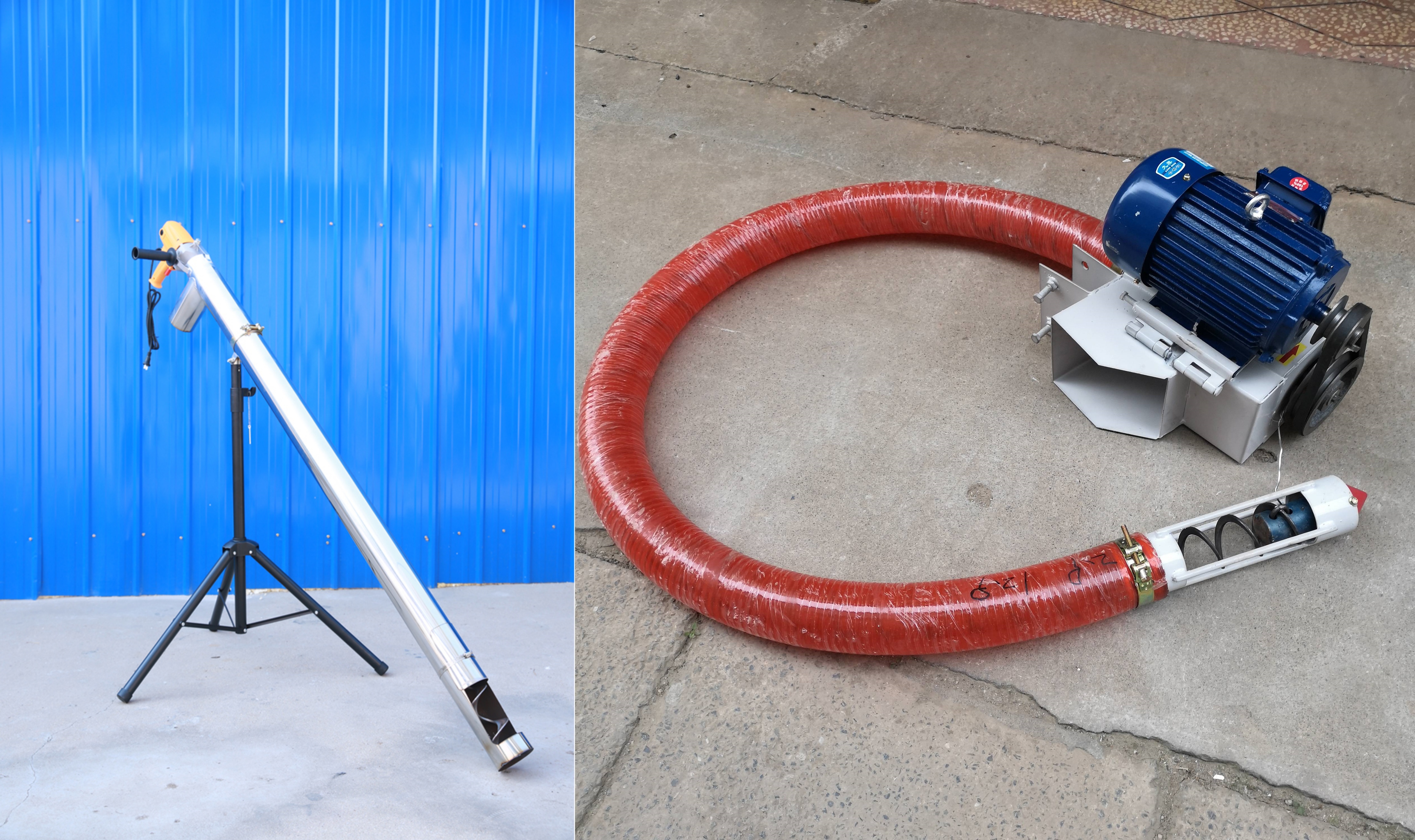Hand grain suction machine for loading paddy and wheat
Friday October-11 2024 11:39:01
The Hand grain suction machine is an agricultural tool used to load granular materials such as rice and wheat. It generates negative pressure through a mechanical device to suck the grain into the pipe, and then transport it to the designated location through the pipe. This equipment is easy to operate and does not require external power, making it very suitable for small-scale agricultural production.
1.Working principle of manual grain sucking machine

The working principle of a manual grain sucker usually involves the following key steps:
Grain sucking device: Manual grain suckers are usually equipped with a dust suction device or conveyor belt to collect grains such as rice and wheat. These devices can be activated manually to start collecting grains.
Delivering grains: Once the grains are sucked into the manual grain sucker, they are transported to a centralized location, usually a collection box or container. This can be achieved by devices such as conveyor belts or screw conveyors.
Collecting grains: The grains are conveyed into the collection box or container, and the farmer can control this process manually. Once the collection box or container is filled, the farmer can transfer the grain to another place for storage or further processing.
Manual operation: The entire process usually requires manual operation by the farmer, including starting the grain sucker, controlling the speed and direction of the grain delivery, and managing the location and capacity of the collection box or container.
2.Application scenarios of manual grain sucking machine

Manual grain suckers are widely used in many rural areas and small-scale farms, especially in areas with limited resources or no mechanized equipment. Here are some application scenarios of manual grain suckers:
Small-scale farms: Manual grain suckers are suitable for small-scale farms to help farmers collect, load and store grain and improve the efficiency of grain harvesting.
Resource-limited areas: In some resource-limited areas, where large agricultural machinery and equipment are lacking, manual grain suckers can be used as a simple and effective way to handle grain.
Traditional agricultural communities: In some traditional agricultural communities, manual grain suckers can help farmers collect and store grain more quickly during the harvest season.
Mountainous or remote areas: In some mountainous areas with complex terrain or remote areas, manual grain suckers can be more convenient to operate because they are usually easier to carry and operate than large mechanical equipment.
Education and training: Manual grain suckers can also be used for agricultural education and training to help farmers learn how to collect and handle grain efficiently.
3.Advantages of manual grain sucking machine

Manual grain suckers have some advantages over large mechanized equipment, especially in specific environments and application scenarios. Here are some advantages of manual grain suckers:
Cost-effectiveness: Manual grain suckers are usually cheaper than large mechanized equipment, making them an affordable option for farmers and ranchers with limited resources.
Easy to use: Manual grain suckers are usually simple in design and easy to operate and maintain. Farmers can quickly learn how to operate these devices without complex training.
Wide applicability: Manual grain suckers are suitable for a variety of grains, such as rice, wheat, etc., and can meet the harvesting needs of different crops.
Flexibility: Since manual grain suckers are usually small and easy to move, they can also be used flexibly in small farmlands or areas with complex terrain.
Suitable for small farms: For small-scale farms or farmers, manual grain suckers are a harvesting equipment suitable for their size and can improve work efficiency.
4.Selection suggestions for manual grain sucking machine

Choosing the right manual grain hopper is important for farmers and ranchers, as different models may be suitable for different operating needs and environments. Here are some suggestions to help you choose a manual grain hopper:
Operation size: First consider the size of your operation and determine the amount of grain you need to handle and how often you need to harvest. Choose the right model and capacity of grain hopper based on the size of your operation.
Grain type: Different manual grain hoppers may be suitable for different types of grains, such as rice, wheat, etc. Make sure the grain hopper you choose is suitable for the type of grain you grow.
Ease of operation: Choose a manual grain hopper that is simple to operate and easy to master so that farmers can quickly get started and harvest grain effectively.
Durability and quality: Choose a manual grain hopper that is reliable and durable to ensure that it can operate stably for a long time and reduce the frequency of repairs and replacements.
Adaptability: Consider the adaptability of the manual grain hopper, including the ability to adapt to different terrains and environmental conditions to ensure that it can operate normally in various situations.
In short, as a convenient agricultural tool, the manual grain sucker plays an increasingly important role in modern agricultural production. It can not only reduce the labor intensity of farmers, but also improve work efficiency and bring convenience to agricultural production.

